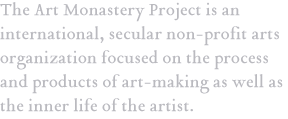More on “5 Leadership Secrets of a Trappist Monk”
A comment by someone named “elizdelphi” on the Washington Post page for the “5 Leadership Secrets of a Trappist Monk” caught my attention, even before I read the article (I wonder how often I scan comments before reading an article online, and what this says about me):
As a Secular member of the Carmelite Order, which is known for the most authentic Catholic Christian mystical teaching, I would like to point out that Catholicism and Buddhism are far from interchangeable. Authentic Catholic mysticism is fundamentally a unifying love relationship between the soul and the triune God, Who is self-existent Being and Who is Love–the most profound relationship of persons. Zen Buddhist mysticism is basically nontheistic and contemplates a kind of transcendent nothingness “being/nonbeing”. Mystics of both these religions affirm that these are genuinely different experiences. The monastic and contemplative practices of various religions indeed have many similarities, unsurprisingly since it’s human persons doing these things, and humans of different religions have the same basic nature. Another key difference is the Catholic mystic’s attitude of profound sorrow for sin, which becomes an utterly priceless openness of the intellect and will to God’s mercy and love, this is not something characteristic of Buddhist or Hindu spirituality. There are other differences, the point is that we make a mistake about what is most essential about these religious traditions, to see outward similarities and then equate them.
Of the two sections I’ve put in bold above, the first contains one the most concise renderings of Catholic mysticism I’ve come across. I don’t know if it’s accurate, and I definitely don’t know enough about Zen to say agree that “Zen Buddhist mysticism is basically nontheistic and contemplates a kind of transcendent nothingness ‘being/nonbeing’,” but I like that kind of bite-sized mystical nugget. It’s like someone is trying to give an elevator pitch for an esoteric, personal understanding of the universe.
Yet from what little I know of Tibetan buddhism, there may be more in common between some branches of buddhism and Christian mysticism than “elizdelphi” suggests.
Who is self-existent Being and Who is Love
The shentong sub-school of Tibetan Buddhism holds that while everything we generally encounter is “empty”, which is to say, empty of an inherent essential nature, there is a ground of reality (God, if you want to call it that) that is “self-existent Being and Who is Love.”
In more detail: our ideas about things are an illusion (parikalpita) that separates us from things themselves, which exist only relatively (paratantra)[1. This has always reminded me of Wallace Stevens “Not ideas about the thing, but the thing itself”]. Yet the ground of reality is only empty of “other-nature.” That is, it is has an essential, if ineffable, nature that is indistinguishable from qualities of luminosity, emptiness, awareness, wisdom, compassion, and power.
Triune God
And in regard to elizdelphi’s “triune God”, there’s the analogy that some folks[2. Here are a few perspectives:
- If you can find someone with an Integral Life account, there’s Ken Wilber’s
- Zen master D.T. Suzuki drew the connection, but this buddhist disagrees
- Leon draws some important distinctions from a Christian perspective
- Chogkhan Thubten Tandhar posits a few more possibilities over at one of my favorite sites, Monastic Interreligious Dialogue
] draw between the Christian trinity and the Buddhist trikaya (the three bodies, nirmanakaya/dharmakaya/sambhogakaya[3. Reggie Ray, from Dharma Ocean, has a good article on the Trikaya, “Three in One: A Buddhist Trinity” in the September 2004 Shambhala Sun]).
Profound sorrow for sin
And on the second emboldened sentence above, I would say that (at least Tibetan) buddhists have a well developed tradition of self-blame. Of the 57 or so lojong (“mind training”) points, “Drive all blames into one” (that is, oneself) is one of the primary ones.
Notes:
Leave a Reply
You must be logged in to post a comment.




